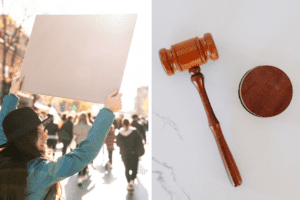Controversial, billionaire playboy, the world’s richest man, and now solo Twitter executive—Elon Musk is nothing if not eccentric. A few days after completing his extravagant buyout of Twitter Inc., Musk has been making global waves.
To say that things have been interesting would be an understatement. The first thing Elon Musk did was dissolve Twitter’s board and fire top executives. And, amid grand promises of promoting free speech, the billionaire has now rolled up his sleeves to turn Twitter upside down.
What the heck is going on with the king of Twitter, Tesla, SpaceX, and the Boring Company? Is there a method to his madness, or is he just winging it and hoping it works?
You’re Fired! Musk’s Whirlwind Approach
In addition to the board and top executives, Musk has fired over 3,700 Twitter employees. According to him, the company is losing $4m a day. To save the company, he intends to stem the bleeding of funds and even slash $1B from the company’s infrastructure costs.
On the Friday of 4th November, Musk fired 50% of the tech giant’s employees via email, including many critical engineering and content moderation teams. In a later meeting, Musk said that he “had no choice.”
Those who survived the layoffs were hardly better off, being required to work 12 hours a day with some sleeping in office couches to meet Musk’s grueling deadlines. And that’s despite Musk wanting to revamp Twitter’s policies and bring in new features on a tight timeline.
Is Musk trying to realize his grand vision with less than half the workforce? There has been an interesting turn of events as he later asked some of the employees he fired to “please come back” because they’re essential to the company and the new features he’s working on.
It goes to show how reckless Musk has been in his first few weeks at the helm of what is one of the world’s most influential social media platforms. Not that he’s shying away from controversy and Twitter wars.
Tweeting Through the Storm
Despite being the solo top dog at Twitter and simultaneously running his other companies, Musk has ramped up his activity on Twitter, spitting out more than 25 tweets a day. That’s a lot even for him, with his most recent tweets ranging from beefing with Jack Dorsey to making masturbation jokes.
Musk’s Twitter account has been pretty interesting lately. He named himself “Chief Twit” on his profile and later, “Twitter Complaint Hotline Operator.” On Sunday, he contributed to a conspiracy theory arguing that birds aren’t real; they’re robots that spy on us.
The Atlantic calls Musk’s tweeting an “exhausting, enraging, grimly hilarious spectacle.” Musk’s first tweet after completing the takeover was, “the bird is freed.” This supposed liberation seems to be the proliferation of misinformation, propaganda, and extremist filth.
After all, Musk wants to protect free speech, never mind if it’s offensive or outrightly subversive. Then, he decided that Twitter will sell the blue verification checkmark for $8 a month and told complainers, “please continue complaining, but it will cost you $8.”
Changing the Verification System and More
Originally, Twitter gave a blue checkmark to notable people, such as politicians and celebrities after verifying their identities. It was a way to prevent impersonation and misinformation, but now Musk wants to give the verified check mark to anyone who can pay.
A lot of people are unhappy and angry at Musk, especially since he’s passing off the subscription service as a solution to the “lords and peasants system” for who has or hasn’t the checkmark.
This premium version of Twitter, called Twitter Blue, will be expanded into other countries such as Australia and New Zealand. Musk has also been considering other ideas, many of which he’s floated on the platform. They include:
- Bringing back Vine, a TikTok-like video-sharing platform by Twitter that was shut down in 2016
- splitting the platform into tiers of content so that users can select what version they want
- Allowing Twitter Blue users to post longer videos, up to 40 minutes long, and eventually removing the time limit
- Charging people for watching video content, with Twitter getting a cut from the proceeds
- Forming a committee to review Twitter’s policy on content moderation and possible reinstatement of banned accounts, such as Donald Trump
- Revamp the search function
- Monetize other forms of content
- Allow users to attach long-form texts
Musk has floated many more ideas through his tweets, many being fantastical and some highly controversial—all in a day’s work.
Twitter is Dealing With a Massive Drop in Revenue
So far, the response to Elon Musk’s erratic leadership has been discouraging. Advertisers have left the platform in droves, fearing poor content moderation especially after Musk’s firing spree reduced the moderation team from hundreds to just 15.
General Motors (GM), General Mills Inc., (GIS), and Mondelez International (MDLZ) have all stopped posting Twitter ads. Many civic groups and advertising agencies have been urging brands to boycott the platform and warned Musk that they would pull ads if he continues to undermine Twitter’s community standards.
These concerns are warranted, it seems. According to researchers, racist slurs have been on the rise on the platform. After Ye’s antisemitic debacle, his supporters flooded the platform with racist tweets in his support, forcing Twitter to delete some of Ye’s tweets and suspend his account.
Twitter is hemorrhaging revenue as scandals like this drive away advertisers. That’s why Musk is desperate to retain and grow revenue by charging users for verification and for consuming certain types of content, even as he pushes with his plans to overhaul the platform.
“Thermonuclear” Campaign
Despite his seemingly carefree campaigns at Twitter, Musk has been working on overdrive to prevent the mass exodus of advertisers from the platform. He already sent a message claiming that he wouldn’t let hate speech run free on the platform.
In the message, Musk said that Twitter cannot become a “free-for-all hellscape.” Even then, many brands such as Lucky Charms and Cheerios (under GIS), GM, Audi, and Pfizer are yet to be convinced.
On Friday, Musk supported a proposal to start a “thermonuclear name and shame campaign,” saying that he’d tried everything to “appease advertisers,” but activists have been working against him.
Having spent $44 billion on Twitter, we can understand why he’s so eager to keep up the revenue by any means possible.
What Does it all Mean for Online Publishing?
Amid all this chaos, and given how much power and influence Twitter (and Musk) wield, it’s unsettling to watch how it’s unfolding. Plenty of people have already weighed in on these events.
Alexandra Ocasio-Cortez wasn’t impressed that a billionaire is selling free speech for $8 a month. Dinesh D’Souza and other conservatives are “giddy, hopeful, and incredulous,” and they celebrated by popping a $4,000 bottle of Louis XIII cognac.
Novelist Stephen King promised to be “gone like Enron” if Musk instituted the $8 charge, and many other influential people feel the same. Those who joined the exodus, voluntarily or otherwise, include Whoopi Goldberg, Amber Heard, Shonda Rhimes, Sara Bareilles, Gigi Hadid, Toni Braxton, Ken Olin, and Mick Foley.
What’s next for Elon Musk and Twitter? Honestly, we can’t tell. Online publishing changes daily, but you can stay in-the-know with us.



